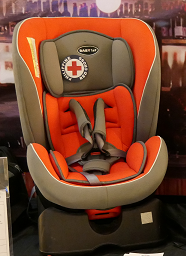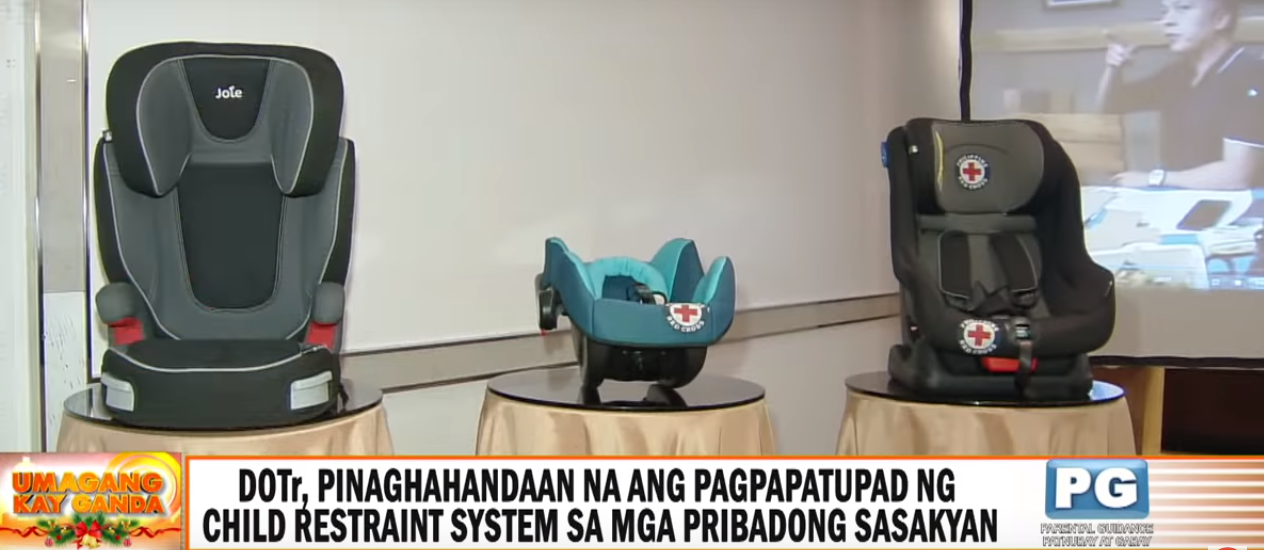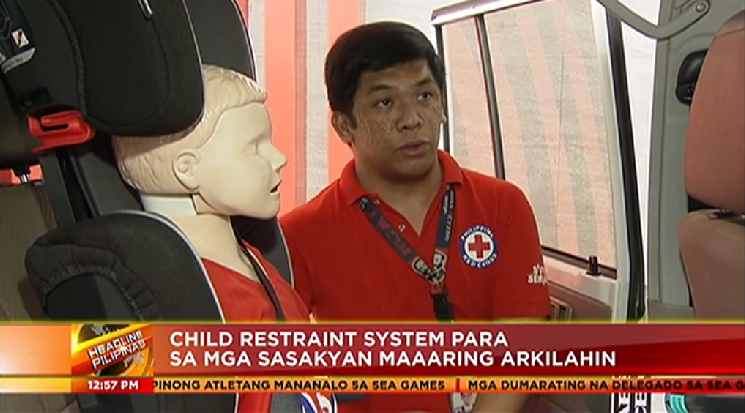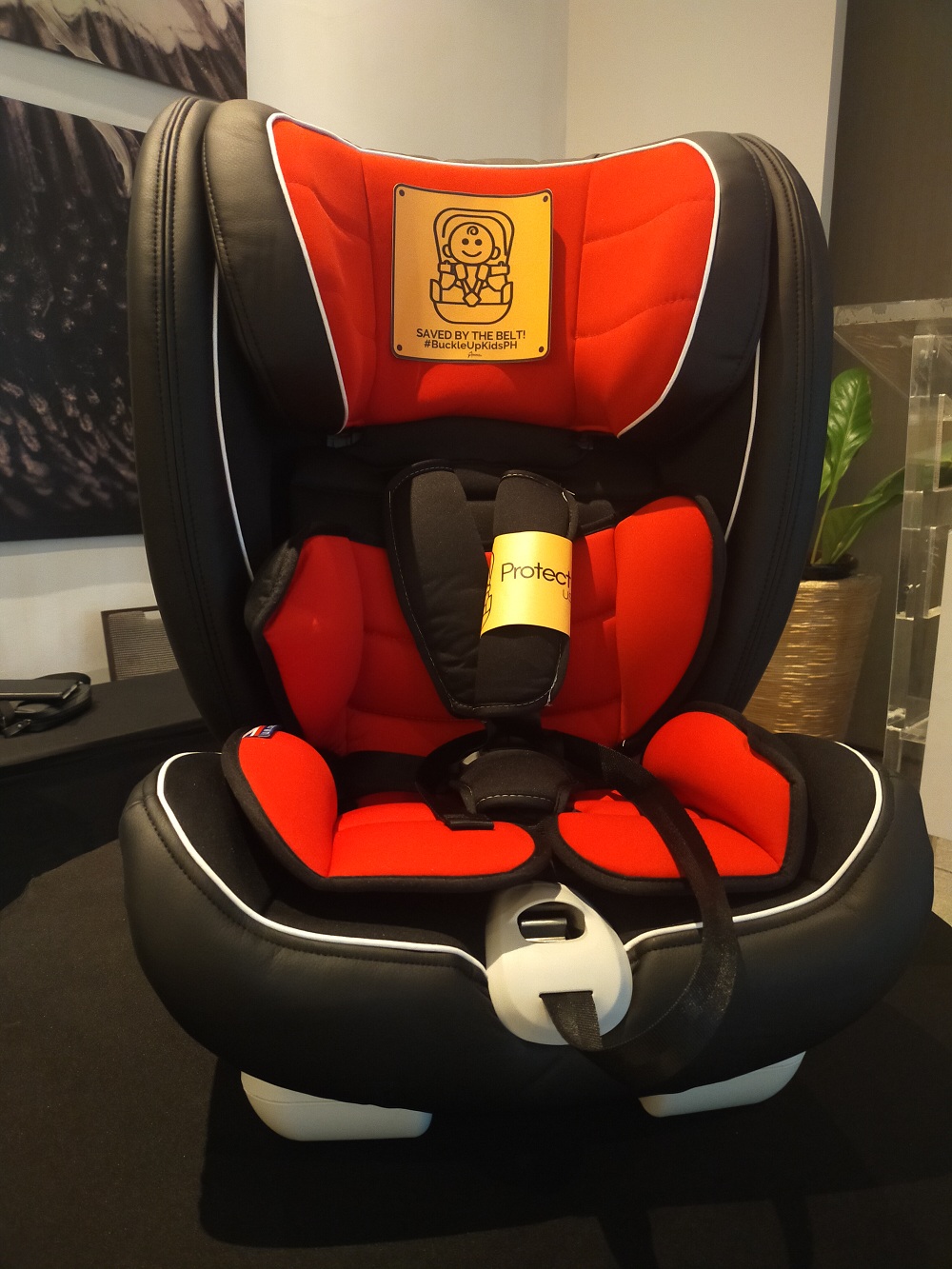While strolling through the children’s section of a department store or browsing around an online marketplace, one gets to see a variety of child restraint systems (CRS) or car seats for infants and children with prices ranging from a few thousands to tens of thousands of pesos.
This makes one realize that complying with the new law mandating the use of car seats will be costly. But the expense will also buy parents peace of mind when they take their children through the country’s dangerous streets and highways.
And peace of mind has no price tag.
Two mothers who bought car seats, even while the bill that eventually became Republic Act (RA) No. 11229 or the Child Safety in Motor Vehicles Act was still being deliberated, know this only too well.
“We decided that when it comes to baby gear, we won’t scrimp,” said Andie Soco Roda, mother of two-year-old Bella.
Ella Jade Ismael, mother of one-and-a-half-year-old Zion, said his safety and comfort while inside the family car are priority.
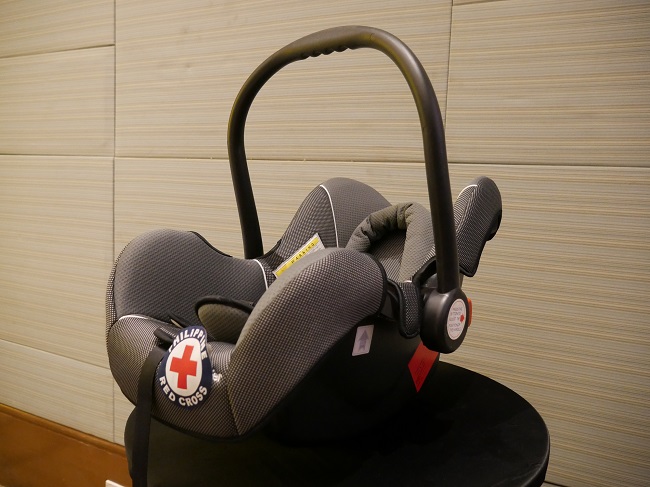
An infant car seat
Bella is now on her second car seat. The first had to be replaced because the fit turned bad as she grew older. The present one should be useful for a few more years.
“When she was a baby, it was very scary,” Roda related. “A slight bump on the road could unbalance you and make you loosen your hold on her.”
“We bought a bassinet as Bella was tiny, she was born premature. But I realized that the bassinet was not safe for her. When she was four months old, we got a car seat that could fit her.”
Ismael said Zion used to sit on her lap in the front seat of the family car but he got too active as he grew older. “He now sits in a car seat. It’s safe for him and comfortable for the two of us.”
The Child Safety in Motor Vehicles Act mandates the use of car seats to protect children 12 years old and below from the risk of injury or death in the event of a crash or a vehicle’s sudden stop by limiting the mobility of the child’s body.
It also prohibits these children from sitting on the front seat of a vehicle unless they are 150 centimeters (59 inches) in height, and buckled up.
Mandatory compliance of the law will be enforced a year after the implementing rules and regulations, to be drafted by agencies led by the Department of Transportation, take effect.
Bella and Zion’s mothers both benefitted from the advice by family and friends to use car seats. Roda said a friend told her to make it one of her first purchases for the baby. Ismael’s sister in the United States was the one who advised her to get a car seat after seeing a photo of her carrying Zion in the front seat of the family car.
That crashes too frequently occur on the country’s roads is also a fact the mothers are familiar with. “There are many irresponsible drivers on the streets,” Roda remarked.
More injuries and deaths on the road
The number of road crashes hit a peak of 32,269 in 2016, according to data from the Highway Patrol Group, the unit of the Philippine National Police tasked with enforcing traffic laws and regulations. That was an increase of around 31% from the previous year.
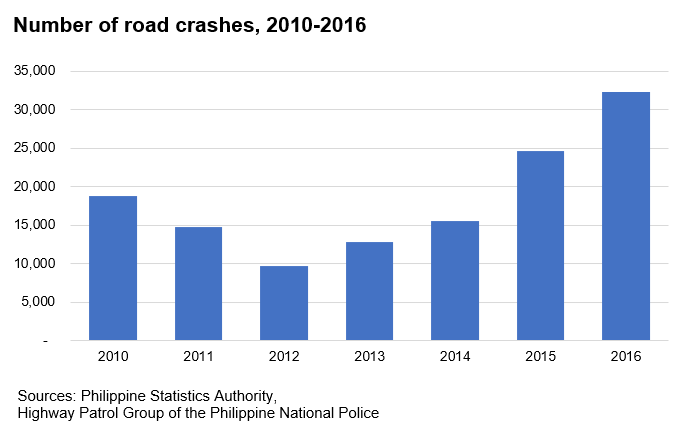
The number of casualties in land transport crashes also reached a new high of 11,274 in 2016, according to data from the Philippine Statistics Authority (PSA), which compiles data on deaths and other life events such as births and marriages. The increase of 13% that year from the previous year was the highest annual rise recorded since 2007.
Victims aged 0 to 14 numbered 705 in 2016, climbing by 11% from 2015, the highest year-on-year rise on record. These victims comprised around 6% of total casualties in land transport collisions that year.
From 2006 to 2016, 92,366 people died in road crashes, making these among the top causes of deaths in the Philippines. Around 8% of casualties were children aged 0 to 14.
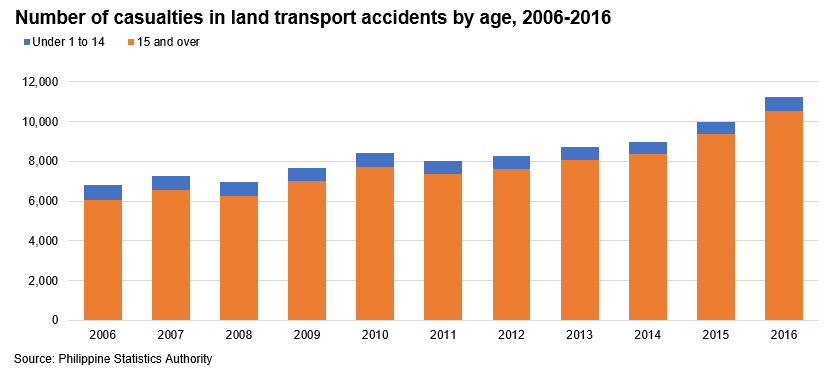
Parsing the PSA data would show that the number of children dying in road crashes had variably decreased or increased one year after another. However, the proportion of children who died in these incidents to the total number of victims had declined since 2006.
Another observation is that children aged 5 to 14 comprised three-fourths of the 7,325 total number of children who had perished in land transport crashes from 2006 to 2016.
Road traffic injuries are the leading cause of death for children and young adults aged 5-29 years, according to the World Health Organization (WHO), adding that the risk of dying in a road crash is more than three times higher in low-income countries than in high-income countries.
But lives can be saved and injuries prevented with well-enforced road safety laws, road safety advocates point out. For children’s safety, it is RA 11229.
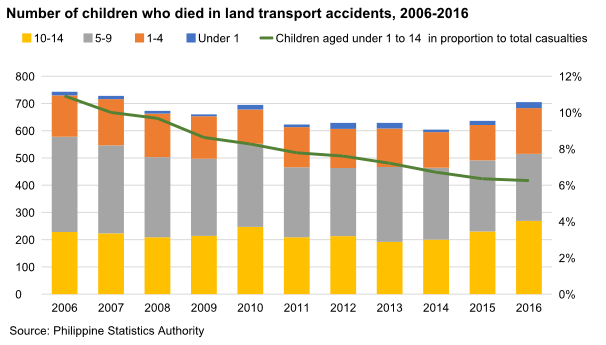
What to look for in a car seat
For Bella’s second car seat, the Rodas chose something that fit her well. The first one had forced her to bend her neck, making her throw up after drinking milk, when she needed to while inside the car.
“We wanted to see Bella in it, to see how her head would position. So we bought the car seat in the mall instead of online,” Andie Roda said.
Zion’s car seat was bought online. “While cost was a consideration, we chose a seat that received a high rating from customers who had bought it,” Ismael explained. “We also ensured that the seat could still accommodate Zion as he grows.”
To be sure, parents can also refer to United Nations (UN) Regulations 44 and 129 on child restraint systems when choosing car seats, which have to be appropriate to the child’s age, height and weight.
UN Regulation 44 categorizes car seats by weight while UN Regulation 129 specifies that any child under the age of 15 months must be transported in rearward facing systems.
RA 11229 mandates the Department of Trade and Industry to ensure CRS meet the safety standards of the UN and that the manufacturers, importers, distributors, and sellers of child car seats comply with such standards.
Attachment of the car seat to the back seat of a vehicle can be done with the use of a seatbelt or the universal ISOFIX systems, the international standard for attachment points for CRS.
Training the children
For children who must use the car seats, it will take time before they get accustomed to them. Parents will need to be creative in training them to use a CRS or in conditioning them to see it as part of their travel experience.
“Bella did not want to be restrained. She wanted to move around inside the car. What we did was to put her in the car seat inside the house for 15 minutes each day until she got used to it,” Roda said. “Now, when we use the car to go out, she looks for it.”
Zion initially resisted the car seat, Ismael said. “To make him get used to sitting on the car seat, we made him see videos of nursery rhymes to distract him.”
In the same way they received advice about safety for their children, the two mothers take the opportunity to tell others about this issue.
“I tell people I know about the possible things that can happen without a car seat,” Roda said.
“I tell other moms to get a car seat and to choose the correct one for their children,” said Ismael.
This story was produced with the help of a grant from The Global Road Safety Partnership (GRSP), a hosted project of the International Federation of Red Cross and Red Crescent Societies (IFRC).

